What exactly are oysters?
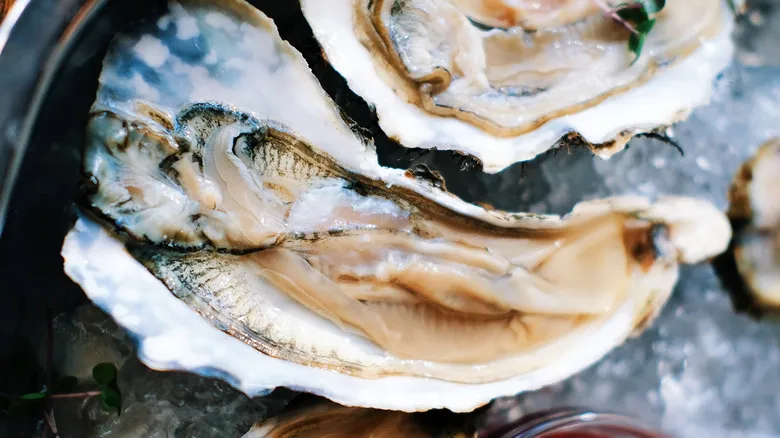
Oysters are bivalve mollusks that belong to two distinct families. True oysters are classified under the Ostreidae family, while pearl oysters are part of the Aviculidae family. Other types of oysters include thorny oysters (genus Spondylus), which can be seasonally toxic and should be approached with caution if you're inexperienced, and saddle oysters (genus Anomia), which are actually a variety of clam and are too bitter for human consumption.
While oysters share similarities with clams and mussels, they are distinguished by their uniquely wrinkled, rough shells that range in color from gray to white. All three types of bivalves are filter feeders, meaning they thrive by filtering plankton from the surrounding water. In the process of filtration, they also eliminate pollutants and bacteria, making them valuable for maintaining the health of our bays and oceans.
Different types of oysters
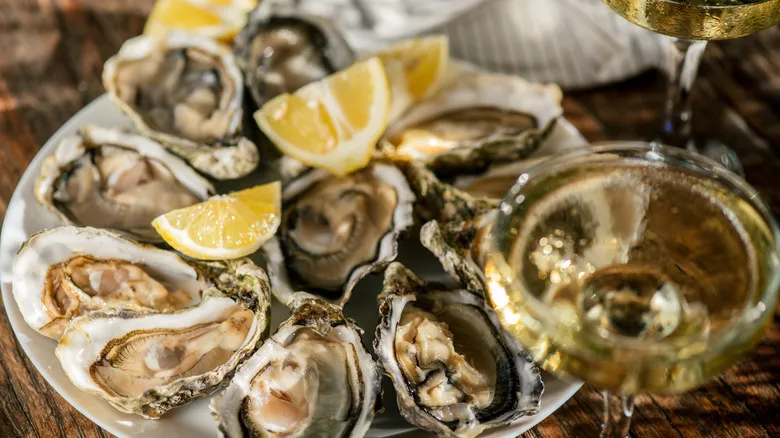
With so many varieties of oysters available, it can be a bit daunting to navigate through them. In North America, some of the most commonly consumed species include Eastern (Crassostrea virginica), Olympia (Ostrea lurida), Pacific (Crassostrea gigas), Kumamoto (Crassostrea sikamea), and European flat (Ostrea edulis).
"In the U.S., there are primarily two types," explains Rima Kleiner, a nutritionist at Dish on Fish. These are "Eastern and Pacific oysters, along with regionally named varieties such as Chesapeake Bay Oysters or Hog Island Oysters." However, oysters are not limited to farms or markets in the U.S.
"Korean oysters are particularly noteworthy for their clean, sweet flavor and consistent quality," says Maricel Gentile of Maricel's Kitchen. "Cultivated in pristine, nutrient-rich waters, they embody centuries of aquaculture knowledge, merging sustainability with exceptional taste." Additionally, pearl oysters can be consumed and are increasingly regarded as a luxury delicacy worldwide. Generally, though, they are more of a novelty, often sold as oyster shells containing party pearls.
Farmed versus wild oysters
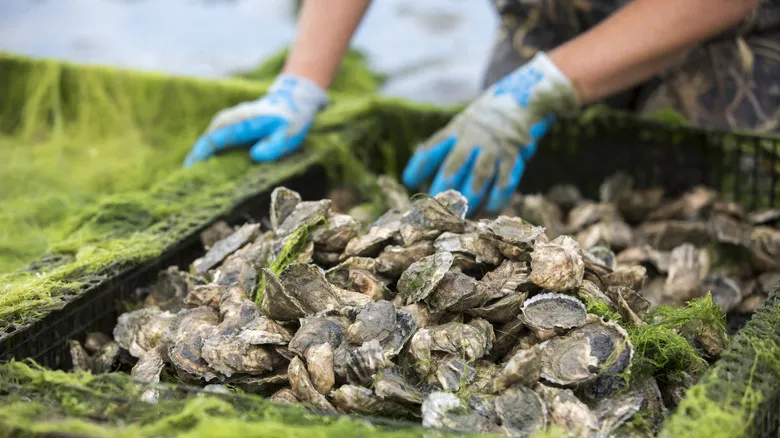
One of the primary dilemmas faced by novice oyster buyers is the choice between farmed and wild oysters. While wild oysters may carry a certain prestige in the seafood world, they aren't always the most environmentally friendly option. "Farmed shellfish is beneficial for the ecosystem," explains Bekah Angoff, a certified oyster sommelier at Wulf's Fish. "It's the only form of commercial protein production that positively impacts the environment, as oysters filter and enhance the water they inhabit and require no fresh water or feed for growth."
Additionally, farmed oysters tend to be of higher quality. "Farmed oysters are cultivated in controlled environments," notes Maricel Gentile. "They usually have a more uniform shape, featuring a deep cup that is ideal for serving. Farmed oysters also possess a consistent flavor profile, often reflecting the unique terroir (or 'merroir') of the waters in which they are grown." Angoff adds that approximately 85% of oysters are farmed, making it the easier option.
That said, if you prefer wild oysters, there are advantages to consider. Wild oysters provide greater variety, although they can be more challenging to locate. They also tend to be more irregular in shape and size, making it difficult to achieve consistency for presentation or cooking. Lastly, natural oyster reefs play a crucial ecological role, so it's advisable to avoid harvesting from them, according to Gentile.
Oyster seasonality
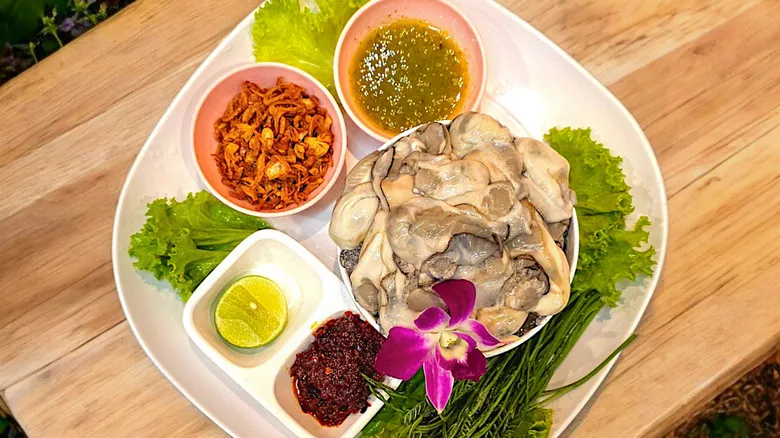
There's an old saying that suggests you should only consume oysters in months that contain the letter R, meaning you should steer clear of May, June, July, and August. This advice was more relevant when only wild oysters were accessible, as the warmer months could lead to unsafe harvests. In those times, it was wise to adhere to a traditional eight-month season for safety.
However, with improved transportation and the advent of farmed oysters, the shellfish season for oysters is now open year-round. "Forget the myth," recommends Rima Kleiner. Instead, savor the diversity that different seasons and regions offer. "Each area has its own distinct oyster flavor profile shaped by local waters and climate." Ultimately, she assures that you can safely enjoy oysters throughout the entire year.
How to buy the best oysters

"Always purchase oysters from a trusted market or directly from the farm," advises Bekah Angoff. "Freshness and proper handling are crucial. Look for the required tag indicating the harvest date." She notes that fresh oysters should feel cold and heavy, with their shells also being cold. "If they aren't, it's best to avoid them."
Maricel Gentile adds that you can also assess freshness by smell. Your oysters should have a clean, briny aroma that evokes the ocean, not a wharf. Lastly, Julian Plateado, founder of Nordic Catch, warns against open oysters. "If an oyster is open, give it a gentle tap; if it doesn't close, it's not good."
Sustainability is another key consideration when buying oysters. "Choose reputable seafood markets or suppliers, such as those certified by programs like K-Seafood or local collectives like the Barnegat Oyster Collective," suggests Maricel Gentile, who supports both. "If you're shopping at a farmer's market or local vendor, don't hesitate to inquire about the oysters' harvest location." If your source is unwilling to answer your questions, it's best to look elsewhere.
Storing oysters until you're ready to serve them
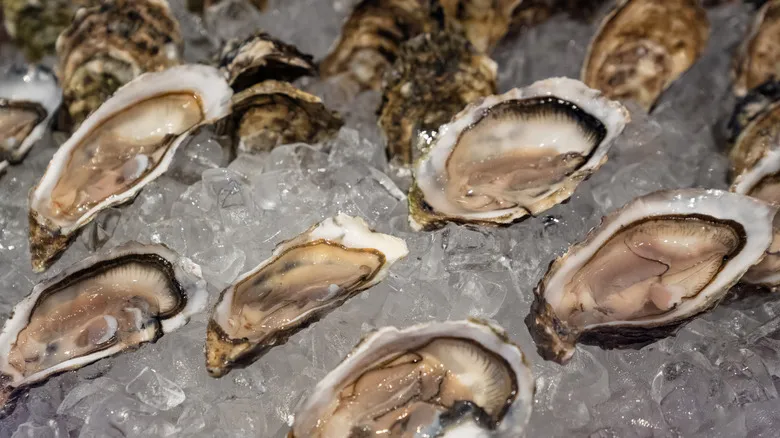
To keep live oysters fresh for as long as possible, Rima Kleiner advises, "store them in a cool, dry area of the refrigerator, ideally between 32–45°F. Position them cup-side down in a bowl and cover with a damp cloth." Ensure that oysters remain refrigerated or on ice until you are ready to serve them. During transport from the store, keep them on ice or in a plastic bag to maintain their freshness. Return them to the fridge within two hours to inhibit bacterial growth, and serve them cup-side down to avoid spilling their juices.
While storing, Maricel Gentile recommends, "Do not submerge them in water or seal them in an airtight container." This applies to both saltwater and freshwater oysters, particularly the latter, which can be harmful to them, according to Rima Kleiner. Although it may seem counterintuitive, oysters need to breathe, which means they can deplete the oxygen in their surroundings and perish. When out of water (such as during low tide), they can breathe air, allowing them to survive in your refrigerator.
Jack Yoss, vice president of culinary for the seafood-centric restaurant group Hai Hospitality, suggests that "oysters should be placed in a perforated pan with another pan underneath" to prevent them from drowning. Cover the oysters with ice and store them in the fridge. "If you don’t have a perforated pan, simply drain the water daily." Oysters can remain fresh for up to a week, but they are best consumed within two days. Once shucked, their shelf life decreases to five days.
Shucking oysters at home: What's the deal?
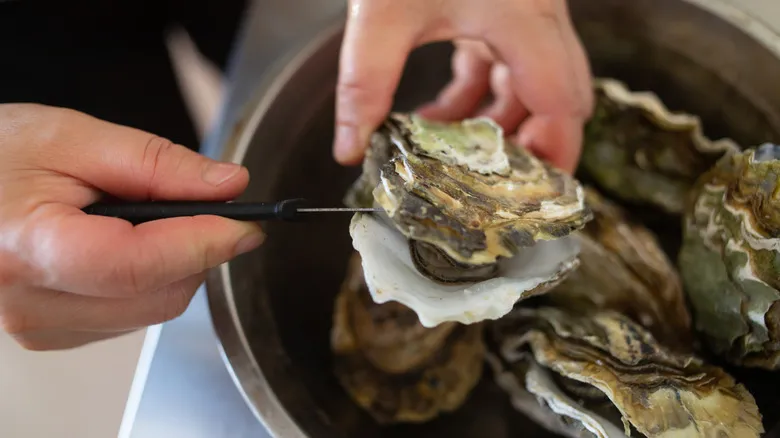
Can you shuck oysters at home? Absolutely. Should you? That depends. Most seafood vendors will happily sell you shucked oysters if you request them. However, if you're feeling adventurous, shucking them yourself is the best way to enjoy ultra-fresh oysters right in your own kitchen. Additionally, Jim Foster, owner of Pelican Seafood Market & Grill, notes, "Shucking oysters at a party brings a lot of excitement to the event and can become a real highlight for your guests."
If you're embarking on a shucking adventure, Jack Yoss has a few tips to share. First, always select the oysters yourself to ensure you have clean, live specimens. Next, scrub the oysters with water to remove any dirt. You'll need an oyster knife and cut-resistant gloves to protect yourself from the sharp blade. If you prefer convenience, consider purchasing a complete oyster shucking kit to avoid the hassle of gathering each tool individually.
Never underestimate the importance of gloves, Yoss advises. As a young chef, he once turned down an offer for an oyster glove, believing that a professional chef wouldn’t need one. "It turned out to be the worst cut I’ve had while shucking," he admits. "Always use gloves." Following an oyster-shucking tutorial can also be beneficial.
Buying oysters pre-shucked
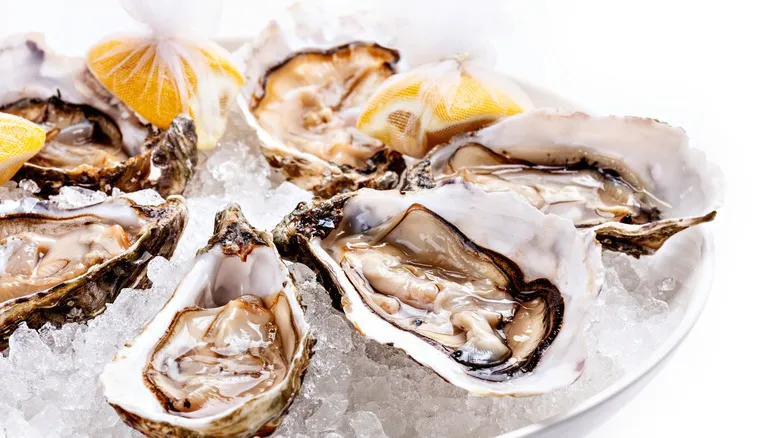
If you're not keen on shucking oysters yourself, that's perfectly okay. You can purchase them pre-shucked from a fishmonger. "Always choose shucked oysters from a vendor with extensive experience in handling raw seafood," advises Jim Foster. Ensure that the person shucking your oysters is highly skilled, does it daily, and practices excellent cold chain management, he adds.
However, Bekah Angoff cautions against buying pre-shucked oysters unless you can observe the process firsthand. When transporting oysters, be careful not to spill their natural liquor, as it enhances their delightful, briny taste. Additionally, this liquor helps keep them cold, so avoid tipping their shells and losing it. If you're not cautious, she warns, "you risk losing the tasty oyster liquor and compromising the quality of the meat." To prevent this, keep them cup-side down in your vehicle and while preparing your dish.
If you've purchased shucked oysters but can't use them right away, there's no need to worry: you can freeze them. Rima Kleiner recommends freezing them for no longer than three months and cooking them after thawing. This eliminates any concerns about bacterial growth that might occur during the thawing process.
Classy oyster presentations
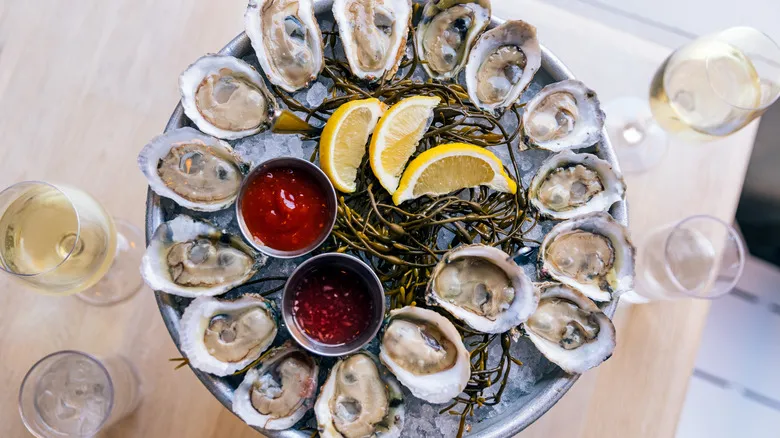
"The most elegant way to present oysters is on a chilled platter, beautifully arranged atop a bed of crushed ice for a striking display," explains Robert Smith, a private chef at Culinary Collective Atl. "Enhance the presentation with lemon wedges, mignonette sauce (a blend of vinegar, shallots, and pepper), and fresh herbs." Be sure to select a metal serving platter that is sufficiently large to hold a layer of ice, ensuring the oysters remain cold as guests enjoy them. Arrange the ice so it remains level, keeping the bottom cup of the oyster shell stable. This way, the oyster's natural liquid, which is a key part of the experience, will stay intact.
While many prefer to tip the oyster directly from the shell into their mouths, some may opt for a utensil, making cocktail forks quite useful. If you anticipate needing them frequently, you might even want to invest in oyster forks. These have a rounded design to cradle the oyster, preventing it from breaking apart, along with a sharp edge to help detach the oyster from the shell. A stunning oyster platter and cocktail napkins can also enhance your table setting. Pairing the oysters with white wine (Sauvignon Blanc is always a great choice) or champagne served in elegant flutes adds a touch of sophistication to the experience.
Mignonette is the traditional sauce to accompany oysters. "Mignonette is simple to prepare at home and always leaves a lasting impression on guests," says Jack Yoss. "Just combine champagne, champagne vinegar, a pinch of salt, cracked pepper, and finely diced shallots, and prepare it right before serving." Ideally, use the same champagne for the mignonette that you are enjoying. If you have some caviar to sprinkle on top, that’s an even more luxurious touch.
Enhancements for oysters on the half shell

While lemon is often seen as the quintessential garnish for oysters on the half shell, there are numerous ways to elevate your presentation and dining experience. Likewise, although mignonette is the classic sauce typically served on the side for diners to customize their oyster experience, there are various other flavor combinations to explore.
To start, consider giving mignonette a unique twist by incorporating blood orange, suggests Robert Smith. Utilizing both the juice and zest will provide a delightful seasoning. Alternatively, he recommends, "Crown each oyster with a spoonful of premium caviar and a hint of crème fraîche. This opulent combination enhances the oysters' briny taste and adds a touch of sophistication."
For those who prefer the traditional oyster shooter, serve shelled oysters in shot glasses filled with a blend of cocktail sauce, vodka, or a zesty tomato-based beverage. A slice of lemon or a sprig of fresh herbs can serve as a playful and elegant garnish. The possibilities are endless. If you're in the mood for something unconventional, Smith suggests pairing oysters with seaweed or citrus foam, or using seasonal garnishes like pickled radishes, microgreens, or even edible flowers to bring color and flavor to your oyster display.
Other ways to prepare oysters

Think you can only enjoy oysters raw? Think again! There are countless ways to prepare them. Rima Kleiner loves grilling oysters with butter, herbs, and Parmesan, keeping them in their bottom shells while cooking. Using a specialized oyster grill pan helps maintain their upright position and preserves their natural juices. This method is quite similar to the classic Oysters Rockefeller recipe, which features butter, herbs, and breadcrumbs. Alternatively, you can simply roast them until the shells pop open, which Kleiner describes as a delicious and flavorful option.
Baked oysters are another delightful choice. "If you have guests who are hesitant, baked oysters are a fantastic introduction before you present them with raw oysters on the half shell," says Jim Foster. Additionally, "They’re a party favorite for us because they can be prepped ahead of time and baked just before serving." Other cooked options, according to Maricel Gentile, include fried oysters, which make excellent appetizers or can be used in po'boy sandwiches; oyster stew; or creamy pasta dishes — and that’s just the American perspective.
"Drawing from my Filipino heritage," Gentile shares, "I also love preparing Talaba Kilawin, a dish where fresh oysters are marinated in vinegar, calamansi juice, garlic, and chili, resulting in a tangy and refreshing ceviche-like creation. It’s a fantastic way to showcase the natural flavors of oysters with a tropical flair." If you master the art of serving oysters on the half shell (as if they’re anything but extraordinary!), this is a wonderful way to elevate your culinary skills and flavor profiles.
Common oyster mistakes
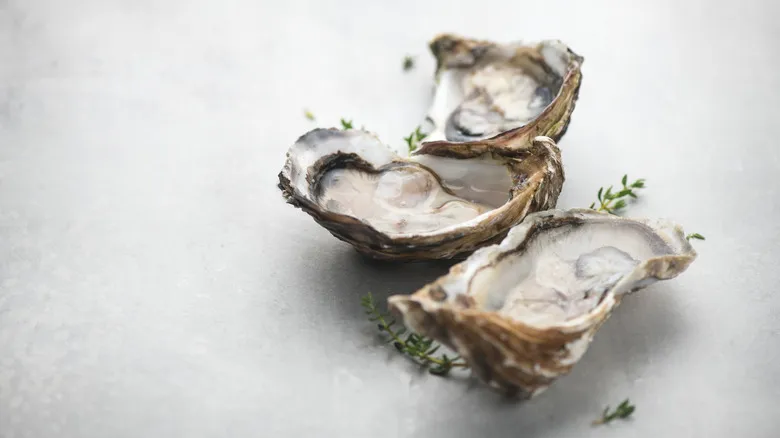
If you're new to handling live oysters, it's essential to adhere to proper storage guidelines. Keep them chilled, ensure they have access to oxygen, and remember to cook any oysters that have been frozen. A small mistake could render them unsafe to consume. Most importantly, according to the U.S. Department of Agriculture, do not allow them to remain at room temperature for more than two hours if the temperature exceeds 40 degrees Fahrenheit. To prevent foodborne illnesses (and you definitely want to avoid those), be mindful of their expiration dates, which can be provided by your fishmonger or indicated on the can if they are preserved.
Additionally, many people may not realize that oysters are sensitive to cold temperatures. "They can freeze if it gets too cold, so avoid leaving them in the garage on a chilly winter night," advises Jim Foster. "Santa Claus doesn't appreciate frozen oysters!"
Finally, if you're not confident or lack the right tools, avoid shucking oysters at home. This can lead to injuries.
Nutritional value and health benefits

Oysters are not only tasty; they are also quite nutritious. "Both farmed and wild oysters are sustainable and offer valuable nutrients such as protein, omega-3 fatty acids, zinc, copper, vitamin D, and vitamin B12," explains Rima Kleiner. "Your choice ultimately depends on personal taste and availability." With just 81 calories per 100 grams (approximately six or seven oysters), you can enjoy them without guilt.
In addition to their delightful flavor, oysters offer numerous health benefits. They are known to support brain and heart health, provide strong anti-inflammatory properties, and may even serve as the aphrodisiac that people have believed in for centuries.
However, it's important to be aware of certain health risks. There is the well-known risk of shellfish allergies, as well as the serious and potentially life-threatening risk of food poisoning. Symptoms of illness can manifest within 24 to 48 hours, and individuals with preexisting conditions, particularly those related to the liver, should exercise caution when consuming them.
Recommended
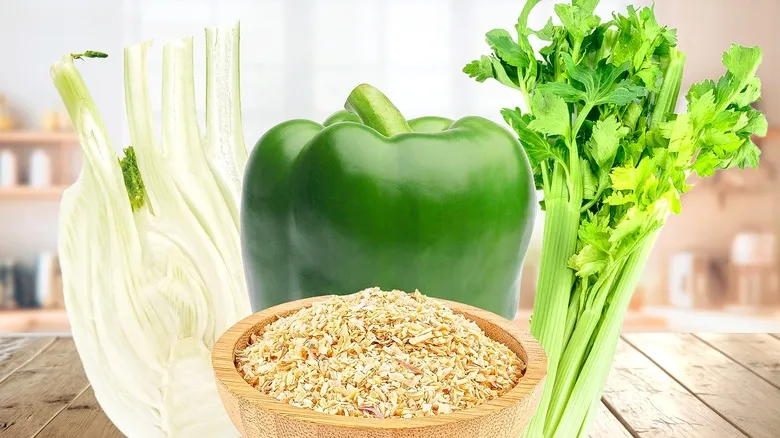
12 Onion Substitutes That Work Remarkably Well

Why Uncovering Your Ham While Baking Is A Huge Mistake

What's In McDonald's Big Mac Sauce, And Can You Recreate It At Home?

The Etiquette Tip To Always Keep In Mind When Dining At Restaurants In Japan
Next up

